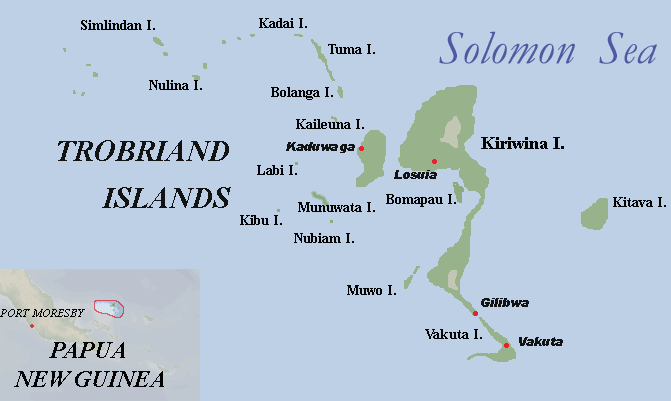Why Gifts Are Good
A brief trip around the globe examining the roles gifts and reciprocity play in a variety of cultural contexts
I envisioned this essay as a rebuttal to the notion that the custom of holiday gift giving has no economic value and therefore should be discontinued. I’d heard this in years past, and I thought it was dumb. However, when I went looking for anti-gift-giving advocates, all the articles I came across seemed to lead back to this one professor of applied economics named Joel Waldfogel, who published a book in 2009 entitled Scroogenomics: Why You Shouldn't Buy Presents for the Holidays. Waldfogel wrote an essay for Slate in 2009 with the striking and absolute headline You Shouldn’t Have: The economic argument for never giving another gift. But the article itself is far more nuanced and hedged. We should continue giving gifts to the less fortunate. We are on solid ground giving gifts to friends and family we see regularly. Where we should avoid giving gifts is when we have little understanding of what the target recipient actually desires. In this case, we’re just wasting money. Waldfogel writes, “When I set out to spend $50 on you, I operate at a significant disadvantage. I’m not certain about what you have or what you want, so when I spend $50 on a gift, I may buy something worth nothing to you. There’s no guarantee that consumer satisfaction meets, exceeds, or even comes close to the amount spent on the gift.”
I still think Waldfogel misses the point of gift giving. But he has a bigger problem in 2021: It’s very easy to simply set up digital wishlists and things of that sort to give someone exactly what they want. My cousins and I have a gift exchange each year, and in the past we’d surreptitiously text around asking what everyone wants if we didn’t already know. This year, however, we used this service called Draw Names that functions as a kind of Secret Santa one-stop shop. You can draw names and create wish lists. Easy peasy. There are similar services with festive names, such as Elfster, which we used at Talking Points Memo for our office Secret Santa one year. So unfortunately for Waldfogel, his economic argument seems to have lost significant heft. Fortunately for me, though, it doesn’t really change what I want to write about.
Gift giving is one of the rare universal features of humanity. Cultures from the Inuit in the Arctic to the Yąnomamö in the Amazon to the ǃKung in the Kalahari desert to the Trobriand people of the Trobriand Islands all have gift-giving customs that are central to their culture. So, in honor of what is likely the most important gift-giving time of the year for many reading this essay, I thought I’d briefly discuss some gift-giving traditions from other cultures that have nothing to do with Christmas, Hanukkah, Kwanzaa, Diwali, or any other holiday, secular or sacred, commonly celebrated in the West.
Yąnomamö
The Yąnomamö live in the Amazon Rainforest between Venezuela and Brazil. There are over 200 individual villages, and alliances between the various villages shift and change over time. As a way of securing alliances or burying past disputes, one village will invite another village over for days of feasting capped by a joint raid of another village. Gifts are critical component of the feasting and also demonstrates a universal truth about gift giving: It’s generally a reciprocal activity. Giving gifts often creates a future obligation on behalf of the person who received a gift. This obligation creates a bond between the giver and receiver. Many think of all gift giving as inherently altruistic, but pause for a moment to reflect on the language we often employ when thanking someone for a gift, “Thank you, much obliged” or “I’m much indebted.”
The Yąnomamö have another custom that might sound strange to outsiders. On the final day of feasting, before the joint raid, the visiting villagers are entitled to ask their hosts for any item they have seen during the feast and the hosts cannot refuse. This can range from food to arrows to pets. There’s of course a calculation that must be made here because at some future date, the roles will be reversed—the visiting villagers will become the hosts and vice versa.
When the visiting villagers request an item, there is of course worry on behalf of the hosts that the gifts will not be reciprocated. But declining a gift would risk breaking the truce between the villages, and is out of the question. It’s this very debt that creates the bond between the villagers. It is the reason for future feasts and, at least between these two villages, contributes to peace.
The practice was the subject of a 1969 documentary by anthropologist Napolean Chagnon and filmmaker Timothy Ashe, which you can view here. It’s a quick half hour. However, I want to point out that there’s some controversy surrounding this documentary stemming from work by investigative journalist Patrick Tierney, who alleges that Chagnon manipulated the situation. According to Tierney, Chagnon more or less bribed one of the Yąnomamö villages to move closer to another, which then led to conflict with the events depicted in the film. However, other anthropologists have defended Chagnon. I am not a professional anthropologist and can’t speak on the situation other than to say the accusations against Chagnon, even if completely legitimate, don’t change the fact that this gift-giving practice is common among the Yąnomamö. If interested, you can read more about the controversy here.
The Trobriand Islanders
The Trobriand Islanders live, as one would expect, on the Trobriand Islands, a 174-square-mile area off the coast of Papua New Guinea. The Trobriand Islanders have an interesting gift-giving tradition known as the kula ring, which was first documented for Western audiences by British-Polish anthropologist Bronisław Malinowski.
Here’s how the kula ring works: The various Trobriand villages have trading partners on other Trobriand islands. They trade two entirely symbolic items with these partners, shell armbands and shell necklaces. The necklaces are only traded with partners who are on islands in a clockwise direction from their own island. The armbands only are traded to partners in a counterclockwise direction.
This practice began as something only done by chiefs of particularly high-ranking lineages, however it has expanded over time. The symbolic “value” attached to each individual necklace or armband is derived from its trading history: Who has “owned” this item previously? Some have proposed that the kula ring is actually a vehicle for the Trobriand Islanders to trade other, more important goods, a kind of ritualistic sideshow. At any rate, it demonstrates the way in which gifts can create social bonds and even a kind of historical, cultural record.
Iñupiat
Lastly, I want to briefly touch on the Iñupiat, and Inuit people in Northern Alaska. Every June, they celebrate Nalukataq, which marks the end of the whaling season. The word Nalukataq itself is derived from Inuit words for “tossing,” as the central event of the festival features various individuals being “tossed” into the air from a large blanket resembling a kind of trampoline.
Originally, hunters and their wives would toss out whale meat and other important staples as a demonstration of wealth. The more one could afford to give away, the better off they were. Nowadays, however, they just toss out candy to kids.
The concept of giving things away as a demonstration of ability, skill, and wealth is a common one around the world and throughout history. Again, they create obligations. The Inuit have a phrase for this: “Gifts make slaves as sure as whips make dogs.” This shouldn’t be that foreign of a concept to American readers. What are campaign contributions if not gifts for which something is expected in return? How much philanthropy would exist if it didn’t come with tax benefits?
I don’t want to be misunderstood here: Giving gifts can also be a sign of mutual respect and admiration. It feels good to give people things that make them happy. There are cultural benefits. Bonds form. Trust is developed. Histories written. But, it’s not entirely, or even usually altruistic.
Marcel Mauss, a French sociologist and anthropologist, wrote a landmark work in 1924 called The Gift in which he argued that gift giving is a social phenomenon that, in the absence of institutions like contract law, was the glue that held small-scale societies together. When economists suggest or analyze gift giving with purely value-based judgements, they are missing something social and cultural about gifts. When we examine the roles gifts play in other cultures, I think it’s easier to notice the roles they play within our own lives. They create bonds, trust, and solidarity. We may want to imagine that gift giving is done simply as an altruistic endeavor, but most of us, even if we don’t admit it, we’re keeping score. And that’s not necessarily a bad thing. It’s definitely preferable to not giving any gifts at all.1
I would like to thank Professor Edward Fischer, whose course “Peoples and Cultures of the World” I enjoyed very much. The specific lecture “The Role of Reciprocity” helped me to craft this essay. For what it’s worth, I love Wondrium (formerly The Great Courses Plus) and highly recommend a subscription to anyone who loves learning. I don’t get paid for this recommendation, although, according to what I just wrote above perhaps I should, eh?





